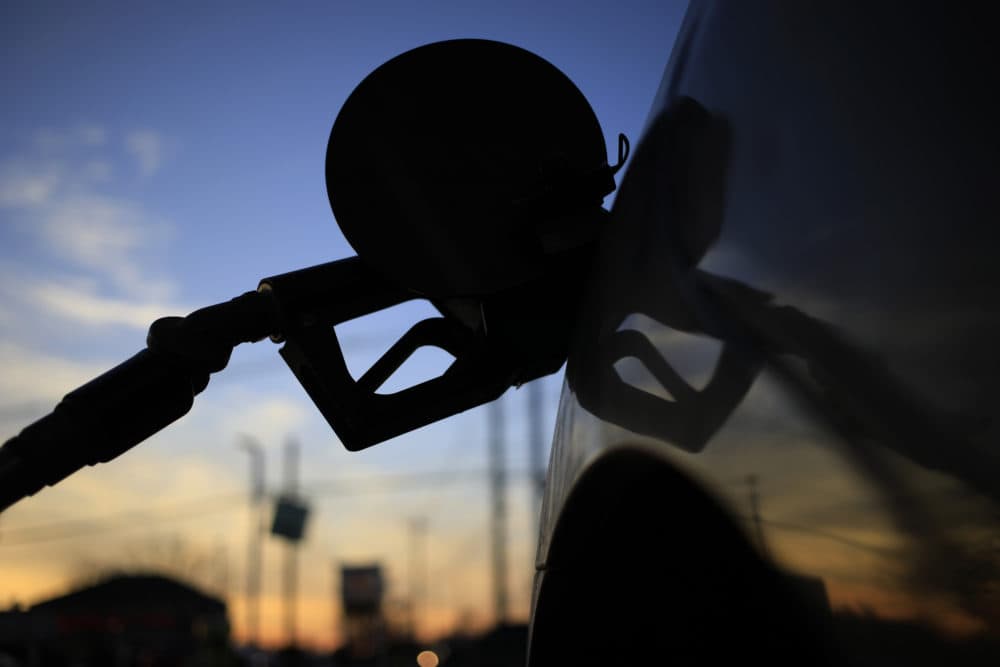Advertisement
Commentary
Shocked by gas prices? Here's why you shouldn't be

America’s passion for big cars, primed by automakers for more than a decade and buoyed by artificially cheap gas, has left the nation humiliatingly vulnerable to the recent surge in fuel prices.
If you haven’t already felt a twinge of regret about buying that SUV, wait until the next time you fill your gas tank. With the U.S. ban on Russian oil imports, the average cost of a gallon of gas in Massachusetts has breached the $4 threshold. In California, it’s already well over $5.
During the past several years of moderate gas prices, car buyers developed a strong preference for larger and more versatile vehicles like SUVs, crossovers and pickup trucks. These cars now rule the U.S. market, making up over 80% of current sales. And the dominance of these less fuel-efficient vehicles has contributed significantly to the global demand for oil.
America loves light trucks, but while consumer choice is certainly one factor that led to the ascendancy of the SUV, it’s not the whole story.
If you haven’t already felt a twinge of regret about buying that SUV, wait until the next time you fill your gas tank.
Billions spent on advertising played a pivotal role in forging the market for more profitable larger cars. You’ve seen the ads — an SUV speeds down a dirt track through the forest, splashes across a rocky riverbed, and emerges triumphantly on a mountain peak. In pursuit of higher margins, the automakers have successfully sold America on a romantic fantasy of power, adventure and freedom. Unsurprisingly, they’ve steered consumers toward the most lucrative segment of their market.
The petroleum industry is equally complicit in the market takeover by SUVs and trucks.
In 2018, The New York Times recounted the industry’s long history of lobbying to weaken federal fuel-economy standards. Led by the Koch brothers and other players, oil producers argued that tighter efficiency regulations were unnecessary because oil was no longer scarce, and also because they resulted in lighter-weight cars that are less safe. Lobbyists pressured the rule-making agencies to loosen emissions requirements for the light-truck category, clearing the way for automakers to load up their fleets with larger footprint vehicles.
Advertisement
American households and businesses have purchased cars and set up their budgets based on the availability of cheap gas, and adapting to the recent price increases will cause hardship. People can reduce their outlay for gas by shortening commutes, carpooling, buying an electric vehicle or using other modes of transportation. But changes in behavior take time. Analysts say that it will take many months of elevated prices to ratchet down demand for larger vehicles.
So the gas-price shock should not be shocking. The American consumer’s desire for SUVs and pickup trucks — and the industries that have profited from them — together set the stage long ago for the economic pain we’re feeling now.
Even as gas prices increase, the cost doesn't begin to cover the social damage of gasoline consumption.
For example, a report from 2018 estimates that the U.S. military spends $81 billion per year to protect global oil supplies, much of that in the Persian Gulf.
Another example is the toll of water and air pollution caused by the extraction, refining and distribution of gasoline. The fracking boom that drove down the cost of oil worldwide is responsible for widespread water and soil contamination in many parts of the U.S.
Cars and trucks are the main sources of ground-level ozone, a primary component of smog. Ozone harms wildlife and ecosystems. It presents a dangerous health risk for people with asthma and other respiratory diseases, costing billions in medical expenses every year.
And critically, transportation fuels account for 29% of U.S. greenhouse gas emissions, the primary cause of climate warming. That’s more than any other sector of the economy.
So how high should the gas tax be in order to reflect the true cost to society?
The federal government’s tax on gasoline, a paltry 18.4 cents per gallon, hasn’t increased since 1993. It’s the lowest gas tax of any nation in the Organization for Economic Cooperation and Development except Mexico.
So how high should the gas tax be in order to reflect the true cost to society?
In Germany, where the gas tax is calculated to take into account social costs, they pay $2.83 per US gallon (that’s just the tax, not the total price). In France, the gas tax is $2.95, and in the Netherlands, $3.51.
Do high taxes alter the social costs? Note that Western European carbon emissions per capita from transportation fuels are about half those of the U.S. What’s more, the death rate from respiratory disease in the U.S. is 50 percent higher than in Germany and roughly triple that of France.
Cheap gasoline is normal in America. Consider the high price of that.
